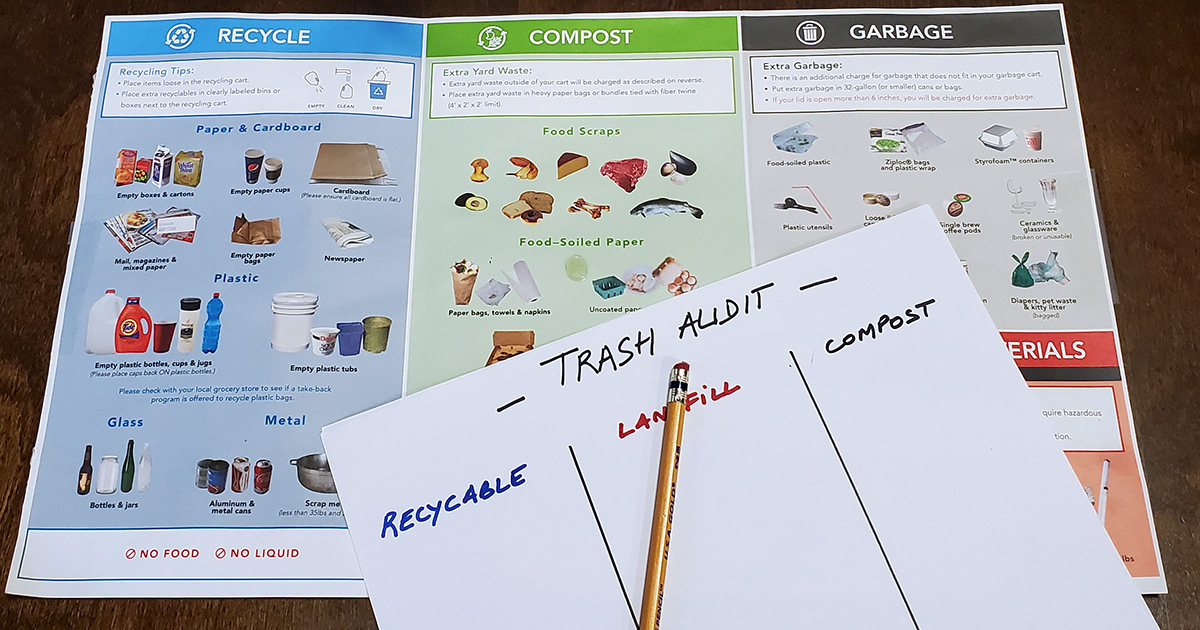
We need a reason to make a change in our lives, a motivation. Consider why you start a diet: to lose weight, to get more energy, or for medical reasons. These reasons keep you motivated. When people decide to live a greener life, they may do it for their children, to save the planet, to reduce waste, to save money, to learn and inspire, to be part of a movement, and so on. As a family of five, the primary reason we decided to start our journey toward a more sustainable life was to reduce our waste.
Until recently, I could not recall a time in my life when I paid attention to our garbage cans. When I thought about it, they had always been dirty, smelly, and overloaded. We used to just consume things and throw away what we did not need. We would collect seven or eight garbage cans around the house, including two bathrooms, three bedrooms, a kitchen, and an office; put them in the large trash bin and put the bin curbside every Friday morning, without question, like a habit. I knew the trash truck would take the trash away, and it would be out of my sight and out of my life, until one day when my 4-year-old daughter asked me where this big truck took all the trash?
Tons of Waste
According to Dumpsters.com, the average American consumer produces about 4.6 pounds of trash per day, while a family creates about 18 pounds per day. That’s more than 6,500 pounds of waste per family per year – half the weight of an elephant!
According to the Environmental Protection Agency, U.S. landfills added 146.1 million tons of waste in 2018, including:
- 35.3 million tons of food,
- 27 million tons of plastic, and
- 17.2 million tons of paper and paperboard.
Wouldn’t it be interesting to understand what we put in our trash cans? What is in those 4.6 pounds that get thrown away every day per person? Where does everything go?
(Fact: When we take a moment to look closely, we find most of what we throw away in the landfill could be avoided.)
Our Home Trash Audit
I was curious to know the kinds of waste and how much my family produced each week so we conducted a trash audit at home. First, we had a short family meeting to discuss the idea, reasons we wanted to do it, and most importantly, to make sure everyone was on board and ready to follow the process. We decided to limit the experience to the kitchen — the room where we produce the most waste. (I plan to do a trash audit in every room this year.)
To conduct our audit, I left a piece of paper and a pen by the garbage can. We wrote down every little thing we threw away for a week, from packaging and plastic wraps to food scraps and veggies stickers. Since we already sorted our trash between compost, recyclable, and landfill, I included three columns on the page. At the end of the week, we counted the number of garbage bags we used as data for us to reference and for our family to improve.
(To know exactly how to sort your garbage, you can go online and print out the “Your Three Carts” sorting guides from Recology Cleanscapes.)
What We Learned
- We learned about our buying habits, including what we buy most frequently.
- We realized what we can control and what is more difficult to control in terms of waste, like product packaging and labeling.
- We got a clear idea of how many bags of trash we threw away.
- We reexamined our three carts process and improved/fixed some mistakes.
- We finally got an idea of what’s in our household waste and what our next steps could be.
Eventually, we could change to a smaller grey garbage can. Our garbage cans were not overloaded anymore; there was no more trash in the street after a strong wind, and we were proud to throw only one trash bag per week in the landfill. We are still far from having four years of trash in a jar, but it’s good progress.
Try Your Own Audit
Click here to download and print my home trash audit guide to get started.
Photo provided by Aline Bloch.
Aline Bloch is the owner of Aline’s Cardboard and a Central Park resident.





